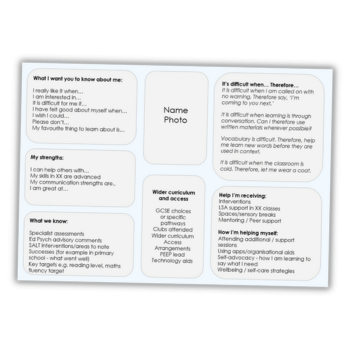Classroom distractions – What task-switching does to students’ attention spans

When getting students to concentrate, teachers should be aware of both the biological factors beyond their control, and the social distractions that are very much within their power to tackle…

- by David Didau
- Writer, speaker & senior lead practitioner for English at OAT Visit website

A large part of any teacher’s day will be spent trying to get kids to pay attention. Biology isn’t on our side in this, claims neuroscience, since our ability to attend is governed by the pre-frontal cortex – an area of the brain which isn’t fully developed until we’re in our mid-20s.
Psychologists have been interested in attention for well over a century. In 1890, William James, the grandfather of psychology, wrote that attention, “Is the taking possession by the mind, in clear and vivid form, of one out of what may seem several simultaneously possible objects or trains of thought.” Students are all too easily distracted. The kind of selective attention needed to block out background noise or activity takes continual effort to maintain. Sooner or later, we all give in to distractions.
One popular myth to be aware of is that human beings can multitask. Many people think they can multi-task effectively, but they’re wrong. True multi-tasking – defined as ‘engaging in two or more conscious thought or information processes at the same time, with no loss of speed or accuracy’ – is something modern computers manage with ease, but the human brain is simply unable to do. Not even women’s brains.
Attention switching
According to the Nobel-prize winning psychologist, Daniel Kahneman, “Anything that occupies your working memory reduces your ability to think.” That’s not to say that having your working memory occupied makes thinking impossible – just harder. Of course, almost everyone can walk and think at the same time, but the effort of maintaining a walking speed above about four miles an hour makes engaging in complex cognitive tasks very difficult.
If someone asks us to think about a complex problem when we’re walking, we’ll often stand still in order to give the matter our full attention. Think about what we do when called upon to make a complex manoeuvre when driving; if we want to reverse park our car, we’ll turn down the radio so that we can better concentrate.
The best we can do is switch our attention between tasks, but every time we shift our attention (from, say, history revision to a social media site) we pay a ‘task-switching penalty’. This penalty means that for a period after switching, our brain struggles to get shift from one mental track to another and engages in what’s termed a ‘re-engagement search’. Every time we make a switch between tasks we lose time and become much more prone to making mistakes.
Easily distracted
Psychologists have studied differences between students who describe themselves as ‘heavy media multi-taskers’ and students who claim to be ‘light media multi-taskers’. When the two groups are tested, the heavy multitaskers are worse at everything – including multi-tasking! It seems that regular task-switching results in being slower at detecting changes in visual patterns, being more susceptible to false recollections, taking longer to task-switch and being more easily distracted. Further studies have shown that regular task-switchers also have less grey matter in brain regions associated with controlling attention. One study has even claimed that regular task-switchers are significantly more likely to be involved in road traffic accidents.
Another study into attention divided students into three groups, and gave each group the same exercise. The first group had their mobile phones switched off and placed in front of them. The second group had their phones switched off but placed behind them, while the third had their phones removed to another room. Interestingly, the first group performed significantly less well on the exercise. Researchers noted that even though their phones were off, students kept glancing at them as if expecting a notification.
The implications for teachers are clear. Allowing students to use one-to-one devices in lessons comes with a cost. In short, task-switching is likely to lead to lower test performance, increased time needed to study to mastery, decreased concentration and a higher likelihood of dying in a traffic accident. You have been warned.
David Didau is an independent education consultant and writer. He blogs at learningspy.co.uk and is the author of several books, the latest of which is Making Kids Cleverer: A manifesto for closing the advantage gap (Crown House); follow him at @DavidDidau







